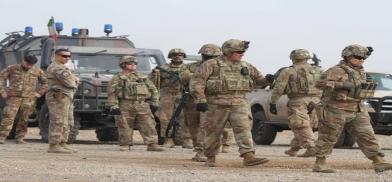What awaits Afghanistan: US in a bind
The Taliban made a major push into big Afghan cities this week, resulting in intense air bombing campaigns from the Afghan Air Force and the US forces in an effort to slow down the Taliban’s offensives

The Taliban made a major push into big Afghan cities this week, resulting in intense air bombing campaigns from the Afghan Air Force and the US forces in an effort to slow down the Taliban’s offensives. Foreign troops withdrawal has already been completed and only a few hundreds troop are left just to guard the sprawling US Embassy compounding housing over 4000 diplomats. and embassy workers in Kabul.
In the last two months, the insurgent group has managed to take control of over half of the country’s over 400 districts, including some major and strategically important border towns. As much as the Taliban’s lightning offensive stunned the world, the quick collapse, or call it capitulation, of the Afghan forces in most parts of the country’s north, was not less shocking anyway, raising the question about the ability of the Afghan forces to defend the country.
Few argued given the conventional superiority of the Afghan forces that they will be able to guard major cities or major population centers. However, the breaching of Kandahar, the provincial center of Kandahar province, Lashkar Gah, the capital of Helmand, and Kunduz most recently, contradicts this notion.
These cities were well guarded, with the local units of the Afghan army and police forces deployed there. Nevertheless, the Taliban insurgents managed to either capture or contest almost most of these cities. Local commanders, in most cases, were killed or switched sides; some of them retreated abandoning cities.
The government rushed special commando units--who have been exhausted as they have been overused-- and intensified airstrikes, including by the US forces, which are now using bases in UAE and Qatar
However, the big question remains: What will happen after 31 August, the deadline set by US President Biden to end the US active combat mission in Afghanistan. Airstrikes by US forces helped the government to deny big cities to the Taliban. The Afghan Air Forces, with increased fighting all around the country, are overstretched.
The Afghan Air Force remains an only clear conventional advantage over the Taliban. However, it heavily relies on US contractors for maintenance, logistics, and training support. A recent report by the US watchdog, Special Inspector General for Afghanistan Reconstruction (SIGAR), said, “How the Afghan National Defense and Security Forces (ANDSF), and especially Afghan Air Force will function without US soldiers and contractors remain unclear.”
The loss could seriously “impact the sustainability and ability to maintain aircraft and vehicles,” the report says.
According to a recent report by The New York Times, Pentagon Officials are most likely to seek authorization from the US President for the next round of airstrikes, well after the deadline of 31 August, should the cities like Kandahar and Kabul appear on the verge of falling. However, this option also risks prolonging the American involvement in the conflict- the very same situation Biden has long sought to endor avoid.
The earlier stated position of the Biden administration is that the US over the horizon mission in Afghanistan would solely concentrate on counter-terrorism purposes, meaning an end to airstrikes against the Taliban. But, the position is likely to change, given the Taliban’s aversion to cutting its ties with global and regional terrorist networks as well as to negotiating a peace deal.
(SAM)









Post a Comment